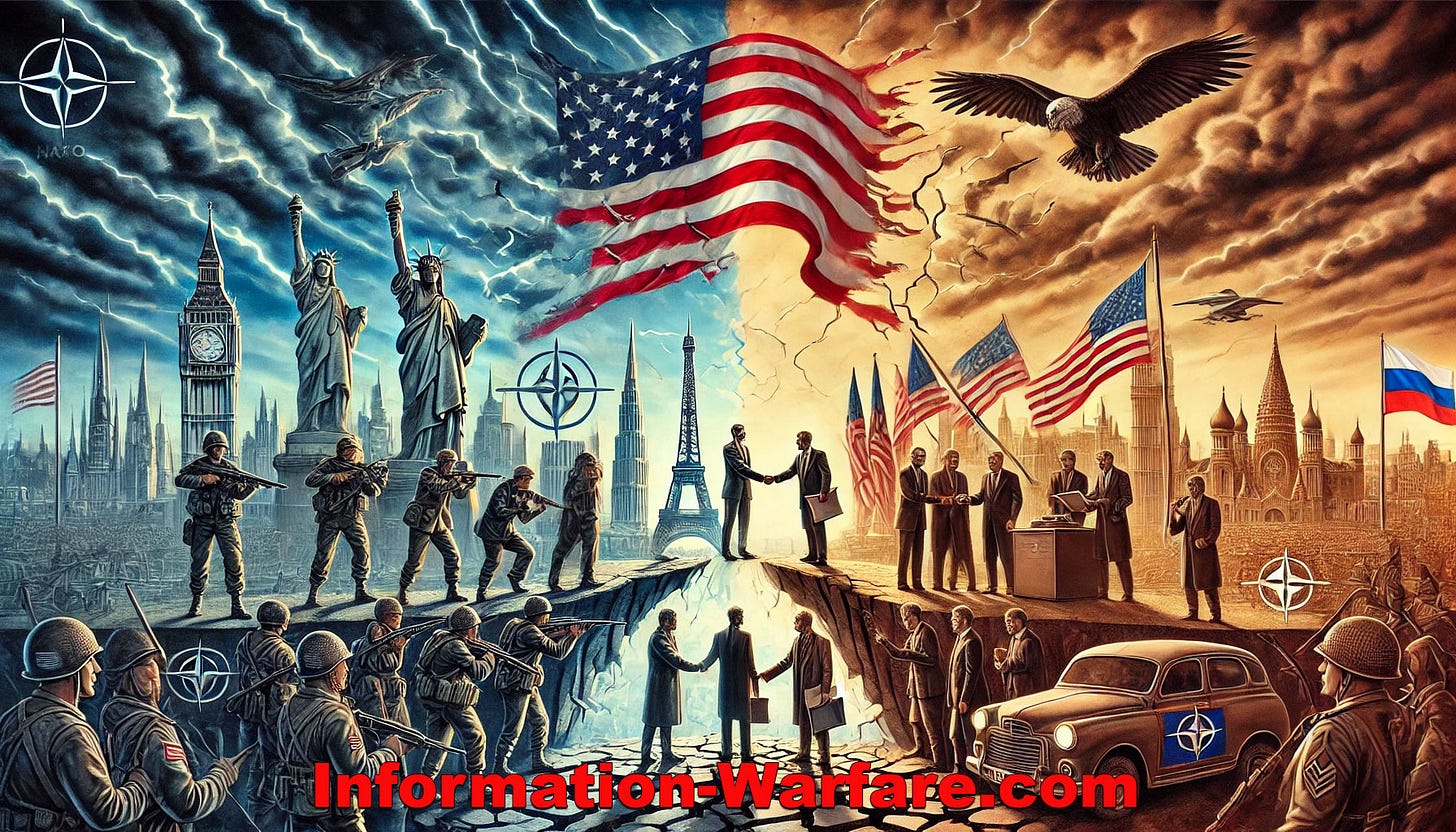The Fall of American Global Leadership
From Unrivaled Superpower to a Nation Among Many
A Shifting World Order
How Political Division, Strategic Missteps, and Rising Competitors Have Eroded America’s Place at the Helm of the International Stage
The decline of American global leadership is the result of a complex interplay of internal and external factors, economic shifts, political polarization, and global geopolitical dynamics. Here’s an exploration of key causes that contributed to this shift:
1. Economic Challenges and Loss of Manufacturing Power
Globalization and the offshoring of American manufacturing jobs over the past several decades led to an economic shift, particularly affecting the middle class and causing discontent within the American workforce. Once a cornerstone of American power, industrial strength diminished as manufacturing moved overseas.
Trade Deficits and Debt: Persistent trade deficits and mounting national debt led to a weakened economic position globally, eroding confidence in the stability of U.S. economic leadership.
2. Political Polarization and Domestic Instability
Rise in Partisanship: Increasingly polarized political factions within the U.S. led to government gridlock, undermining the nation’s ability to respond effectively to both domestic and international crises.
Erosion of Trust in Institutions: A declining faith in institutions—driven by scandals, perceived corruption, and deep partisan divides—further weakened the cohesion of American society and its ability to project a unified stance on the global stage.
3. End of Bipartisan Foreign Policy Consensus
Shift from Cold War Consensus: During the Cold War, a bipartisan consensus in foreign policy enabled the U.S. to pursue long-term strategies to counter Soviet influence. However, post-Cold War, partisan divisions on foreign policy led to inconsistency in international commitments and weakened alliances.
Isolationist Movements: Growing isolationist sentiments led to a retraction of American involvement in international organizations and agreements, diminishing its role as a global stabilizing force.
4. Wars and Strategic Missteps
War on Terror: The protracted conflicts in Iraq and Afghanistan diverted resources, strained alliances, and tarnished America’s global reputation. The financial and human cost of these wars made Americans weary of military interventions and skeptical of global engagement.
Questionable Alliances: Changing stances and transactional approaches under various administrations weakened trust in American commitments, causing allies to seek alternative partnerships.
5. Rise of Global Competitors
China’s Economic and Military Rise: China’s rapid economic growth and its Belt and Road Initiative increased its influence across Asia, Africa, and Latin America, challenging American dominance.
Russian Assertiveness: Russia’s regional ambitions and interventions in Ukraine, Syria, and elsewhere weakened NATO’s influence and tested American-led security alliances.
6. Technological Shifts and Cybersecurity Threats
Cyber Threats: Rising cyberattacks on critical infrastructure and influence operations in social media by foreign actors undermined American democracy and security.
Shift in Technological Leadership: While the U.S. remains a tech leader, competition in areas like 5G, AI, and quantum computing with nations like China challenged its technological supremacy.
7. Cultural Shifts and Nationalism
Domestic Disillusionment with Globalization: Discontent over globalization and its perceived harm to American jobs and industries fueled populist and nationalist sentiments. These sentiments eroded support for multilateral agreements and interventions.
Identity and Cultural Fragmentation: Cultural fragmentation and divisive politics weakened the cohesive identity that previously underpinned American foreign policy, making it difficult for the U.S. to project a unified image abroad.
8. Diminished Soft Power and Cultural Influence
Decline in Diplomatic Efforts: Reduced investment in diplomacy and international aid weakened American soft power. Allies grew uncertain about America’s commitment to shared democratic values.
Challenges to Cultural Dominance: As other nations grew in economic and cultural influence, American culture was no longer the primary global reference point, further reducing the U.S.’s ability to influence global public opinion.
9. Global Perception of Inconsistency and Retreat
Withdrawal from Global Agreements: Withdrawal from climate agreements, international trade deals, and global health initiatives conveyed an image of retreat and inconsistency. This perceived retreat from global leadership left a void that other powers readily filled.
Challenges in Global Reputation: Episodes of social unrest, partisan politics, and perceived declines in human rights commitments led to critical global scrutiny, weakening the moral authority the U.S. once wielded as a leader of democratic values.
Conclusion: An Era of Transition
America’s decline in global influence reflects a combination of economic, political, and strategic shifts that have reshaped the world order. As new powers rise and regional players gain influence, the world appears to be moving toward a multipolar system where U.S. leadership is no longer a given. While America remains a powerful nation, its role as the unchallenged leader of the post-World War II era has fundamentally changed. Addressing these challenges will require renewed commitments to both domestic resilience and international cooperation.


